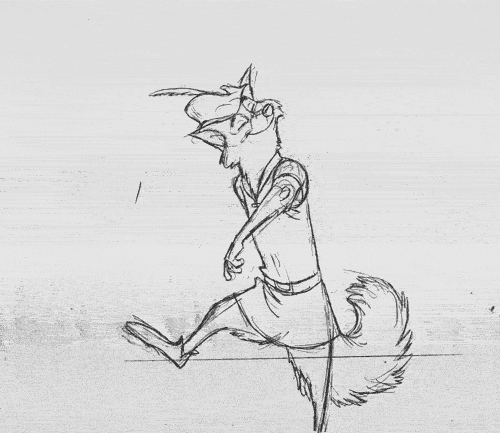This will be repeating what he says, and more
"Follow through" means that loose parts of a body should keep moving after the character has stopped and the parts should keep moving past the point where the character stopped and get pulled back towards the center of mass or for most characters the torso. "Overlapping action" is having parts of the body to move with different timing and speed (an arm will move on different timing of the head and etc).
A third similar technique is "drag", where a character moves and parts of him take a few frames to catch up.These parts can be objects like clothing or the antenna on a car, or parts of the body, such as arms or hair. On the human body, the torso is the core, with arms, legs, head and hair that normally follow the torso's movement. Body parts with more tissue, like large stomachs and breasts, or for example loose skin on a dog, are more prone to carry drag movements than bonier body parts.
 Also One thing to note. When people turn their head they close their eyes. Try it yourself and watch others do it. You'll find you and others unconsciously do it all the time, and it feels weird when you force yourself to keep your eyes open when you turn.
Also One thing to note. When people turn their head they close their eyes. Try it yourself and watch others do it. You'll find you and others unconsciously do it all the time, and it feels weird when you force yourself to keep your eyes open when you turn.
Exaggerated use of Drag can make a comical effect, while more realistic animation has to time the actions exactly, to make a convincing result.
The "moving hold" animates between similar key frames, even characters sitting still can display some sort of movement, such as the torso moving in and out with breathing.
When I (Mark Kennedy) was animating for a living, there were some animators that would leave off the secondary action until they had worked out the action (and the acting) first. Then when the director approved the scene they would go back and add the hair, clothes, etc. Or even have an assistant do it for them. That way you're focusing on the most important part of the scene first without worrying about the secondary action.
Nothing wrong with this of course. Personally I (Mark Kennedy) couldn't do it, It drove me crazy because it always looked stuck on if you added it second. And drawing a bald or naked character just always looked so lame I couldn't bear to show it to a director. And as I've said before, for me my drawings have always been best when I conceived them all as one thing. Each drawing is one design in and of itself. How can you add later and have it still look good? This is why I don't use a Cintiq at work - it encourages you to work and rework each part of a drawing seperately. I hate that! If I don't draw it all as one thing (including background and all the characters all at once) then I never like it. I tend to draw really fast and the Cintiq and Photoshop can't seem to keep up with me...but I digress. This post is supposed to be about follow through!
I feel seeing it demonstrates more and is easier to understand than words alone so here are more examples







No comments:
Post a Comment